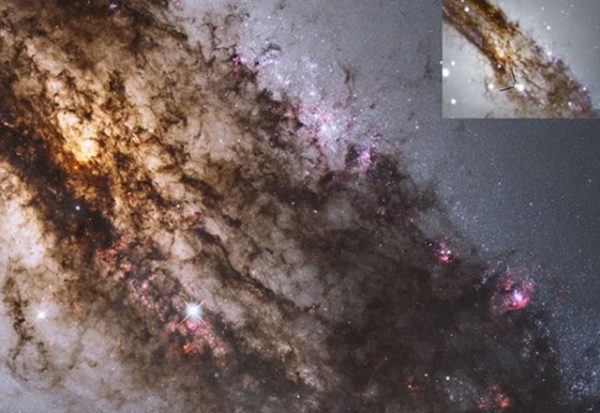Popular supernova SN 2016adj in the Centaurus A galaxy continues to turn up new surprises as observations continue.

As reported on our Perth Observatory blog the supernova was discovered by Australian amateur astronomers, the Backyard Observatory Supernova Search team (BOSS), a collection of backyard amateur astronomy enthusiasts from around Australia and New Zealand that have become quite the well-oiled machine at one particular area of astronomy research observations: Supernova searching. BOSS scan the skies on a regular and very frequent basis for new supernova, then when they have a potential suspect to collaborate with professionals to confirm their supernova discovery. It’s a fun and very personally rewarding experience.
Now over 6 weeks on from discovery the supernova SN 2016adj (Cen A) has been photographed on everything from a smartphone to advanced amateur astronomy equipment and even the Hubble Space Telescope! In fact, the supernova has been photographed by three NASA space telescopes – The HST, Chandra X-ray Observatory, and the Spitzer IR telescope! Not bad for a backyard discover. With the HST scientists are able to identify the probable star that blew up in previous images taken through the HST on the 6th July 2010, comparing that to the current supernova images provides a rare opportunity.
The supernova is now fading but if you’d like to check out the galaxy regardless, it is perfectly positioned for viewing. is about 12 million light-years away – not too far in the cosmic scale of things! It’s proximity and size make it appear relatively large and distinguishable in telescopes. You can find the galaxy in the constellation of Centaurus not far from the Southern Cross and Pointers. In fact, you can almost make an equilateral triangle with the Southern Cross and Pointers to find it. Using the simulated image below you can see the location of NGC 5128, Jupiter in the top left, Saturn just barely above the horizon and the Southern Cross and Pointers. This image is for 10:30 pm in Perth (or close by).






